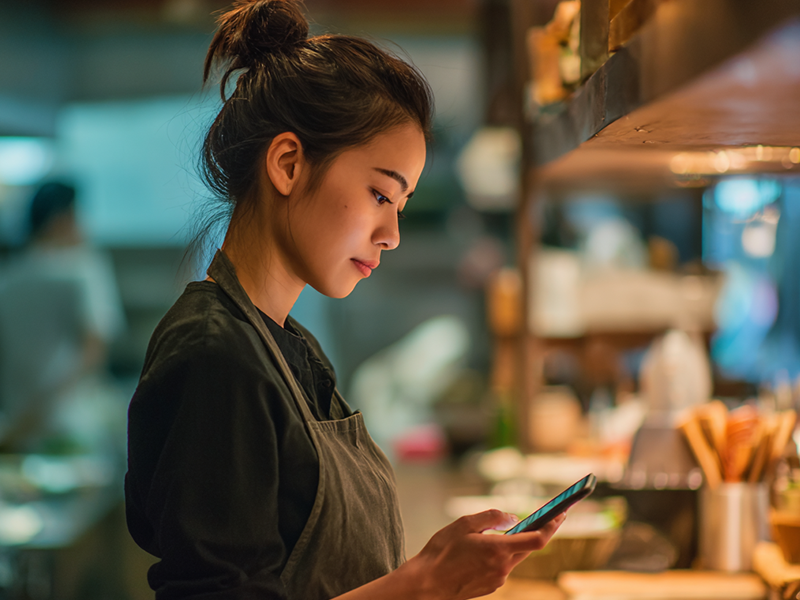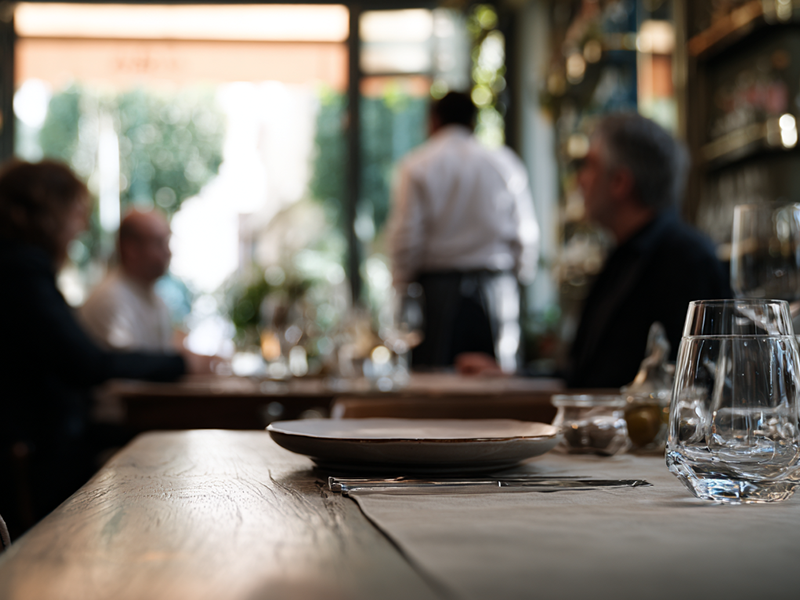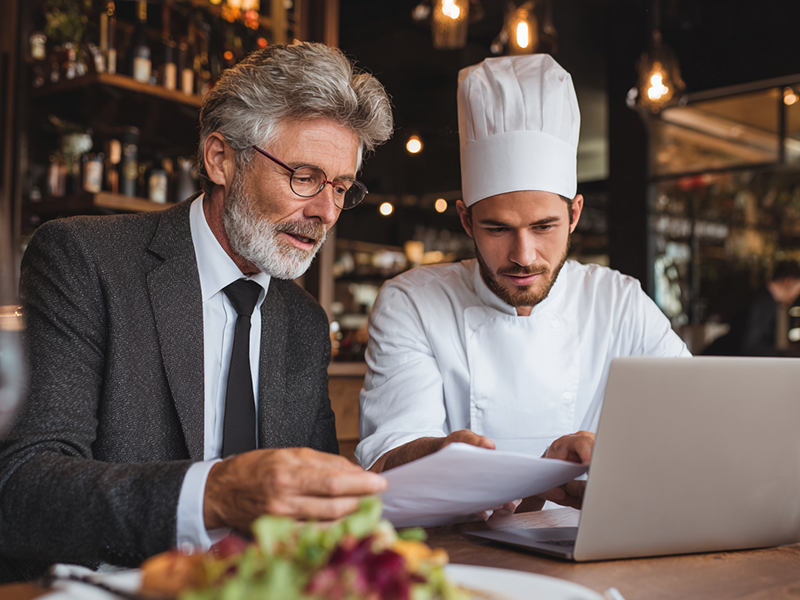By Katrin Krakovich, CEO & SEO Expert at Lahav Media
Your mobile website is probably costing you customers right now. I know that sounds dramatic, but here's the reality: 73% of people visiting restaurant websites are on mobile devices, and if your site takes longer than 3 seconds to load or looks like a desktop site squeezed onto a phone screen, they're already scrolling to your competitor.
Last week, I was helping a coffee shop owner in Portland understand why their Google Ads weren't converting. We pulled up their website on my phone, and I couldn't even find their hours without zooming in and squinting. The menu was a blurry PDF that required downloading. The "Order Online" button was buried somewhere near the bottom.
This is exactly how restaurants lose hungry customers every single day.
The Mobile Reality That Restaurant Owners Miss
Most restaurant owners I work with focus on their desktop website because that's how they view their own business. But your customers aren't sitting at desks researching where to eat dinner. They're walking down the street, sitting in their car, or lying on their couch at 9 PM wondering what to order.
When someone searches "pizza near me" or "coffee shops open now," they want information fast. Your mobile website needs to answer their questions in under 10 seconds, or Google will show them someone else's restaurant instead.

Essential Mobile Website Elements Every Restaurant Needs
Make Your Phone Number and Address Instantly Visible
Your phone number should be clickable and prominent at the top of every page. Not hidden in a footer, not buried in a contact form. Right there where hungry people can tap it immediately.
The same goes for your address. I've seen too many restaurants lose customers because people couldn't quickly figure out where they're located. Include a one-tap directions button that opens Google Maps automatically.
Optimize Your Menu for Small Screens
PDF menus are mobile website killers. They're slow to load, impossible to read without zooming, and make ordering feel like work. Instead, create a simple HTML menu with clear categories, readable fonts, and prices that don't require squinting.
For cafes and coffee shops especially, highlight your most popular items at the top. Someone rushing to work doesn't want to scroll through 47 specialty drink options to find a regular coffee with cream.
Speed Up Your Loading Time
Mobile users on cellular data won't wait for slow websites. Compress your images, minimize plugins, and choose a hosting provider that prioritizes speed. Google actually factors your website speed into local search rankings, so a fast mobile site helps you show up higher in "restaurants near me" searches.
I recently worked with a bar owner whose website was loading hero images that were 3MB each. We compressed them to 300KB without losing quality, and his mobile loading time dropped from 8 seconds to 2 seconds. Guess what happened to his online reservations?
Navigation That Actually Works on Mobile
Simplify Your Menu Structure
Desktop websites can handle complex navigation menus with dropdown categories. Mobile websites cannot. Stick to 4-5 main navigation items maximum: Menu, Hours, Location, Order, Contact.
Use Large, Finger-Friendly Buttons
Those tiny "Reserve Table" buttons might look sleek on desktop, but they're frustrating on mobile. Make clickable elements at least 48 pixels tall and wide. This is especially important for ordering buttons and phone number links.
Implement Smart Search Features
Add a search function that helps customers find specific menu items quickly. A visitor searching for "gluten-free" or "vegetarian" options should be able to filter your menu instantly, not read through every single item description.
Local SEO Elements That Boost Mobile Performance
Optimize for "Near Me" Searches
When someone searches "Thai restaurants near me," Google prioritizes businesses with strong local SEO signals. Your mobile website should include your city and neighborhood names naturally throughout your content.
For example, instead of just saying "Best coffee in town," say "Best coffee in downtown Minneapolis" or "Serving Capitol Hill since 2019."
Include Customer Reviews and Social Proof
Mobile visitors make faster decisions than desktop users. Include recent Google reviews, customer photos, and testimonials prominently on your mobile site. This social proof helps convert visitors into customers quickly.
Add Local Schema Markup
This technical element helps Google understand your restaurant's information better. Include schema markup for your business hours, menu items, location, and contact information. It's what makes your restaurant information appear correctly in Google's local results and voice search answers.

Common Mobile Website Mistakes That Kill Conversions
Auto-Playing Videos and Music
Nothing makes mobile visitors leave faster than unexpected audio or videos that start automatically. Save bandwidth and battery life by making all media click-to-play.
Pop-Ups That Cover Everything
"Join our newsletter" pop-ups that take over the entire mobile screen are customer repellent. If you must use pop-ups, make them small, easy to close, and only show them after visitors have had time to browse.
Complicated Ordering Processes
Your online ordering system should require no more than 4 taps to complete a simple order. If customers need to create accounts, fill out lengthy forms, or navigate through multiple pages just to order a sandwich, they'll call your competitor instead.
Technical Tips for Better Mobile Performance
Choose Mobile-Responsive Design
Your website should automatically adjust to different screen sizes without requiring a separate mobile site. Responsive design ensures your content looks professional on phones, tablets, and desktops.
Optimize Images for Multiple Devices
Use responsive images that load the appropriate size based on the visitor's device. A phone doesn't need to download your 4K hero image when a smaller version will look identical on that screen.
Test on Real Devices
Don't just resize your browser window to test mobile experience. Pull out your phone and actually navigate your website like a customer would. Better yet, ask friends to try ordering from your site and watch where they get confused.
Voice Search and AI Optimization for Restaurants
With more people using Siri, Google Assistant, and ChatGPT to find restaurant recommendations, your mobile website needs to answer questions conversationally.
Instead of just listing "Italian Restaurant," include phrases like "family-friendly Italian restaurant with outdoor seating" or "authentic pasta and pizza made fresh daily."
When people ask AI assistants "What's a good brunch spot nearby?" or "Where can I get the best burger in [city]?", you want your restaurant information to appear in those responses.
Measuring Your Mobile Website Success
Track these metrics to understand how well your mobile website converts visitors into customers:
Mobile page load speed (aim for under 3 seconds) Mobile bounce rate (should be lower than desktop) Click-to-call conversion rate from mobile Mobile traffic from local searches Online orders completed on mobile devices
Most restaurant owners I work with are surprised to learn that their mobile conversion rates are actually higher than desktop when their website is optimized properly. Mobile visitors are often ready to buy; they just need a smooth path to do it.

The Competitive Advantage of Great Mobile Experience
While your competitors are still trying to squeeze desktop websites onto phone screens, you can capture their customers with a genuinely mobile-optimized experience.
I've seen restaurants increase their online orders by 40% simply by making their mobile ordering process faster and clearer. Coffee shops that optimize their mobile sites for quick morning orders consistently outperform competitors in local search results.
Your mobile website isn't just about looking professional. It's about making it ridiculously easy for hungry people to choose your restaurant over the dozens of other options in their pocket.
The restaurants, cafes, and bars that understand this aren't just surviving in competitive markets. They're dominating them.
Frequently Asked Questions

-p-500.jpg)
